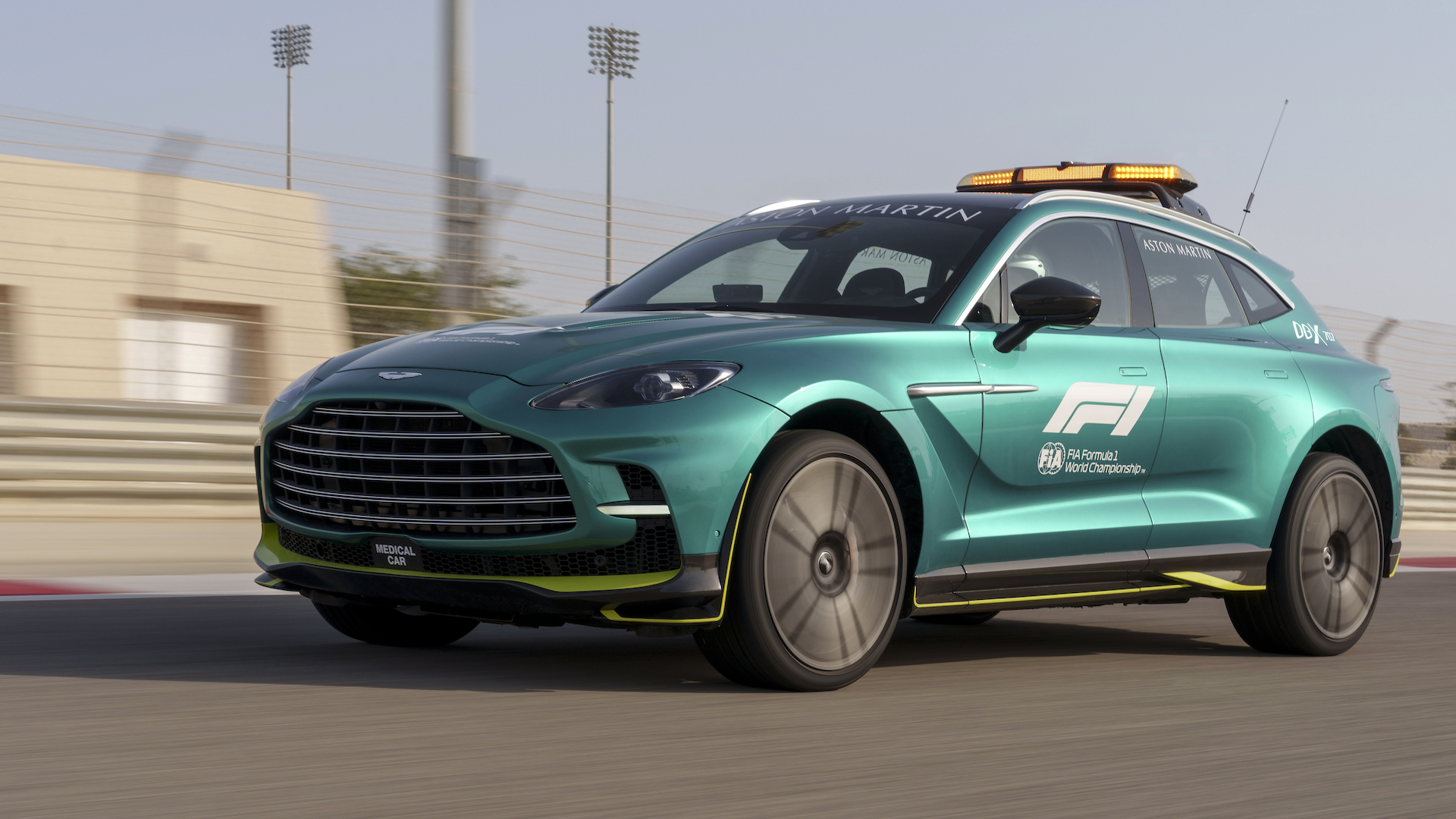

The Formula 1 Safety Car gets lots of airtime on TV and every now and then steals a headline. Meanwhile, there’s another support vehicle that’s equally important—if not more—than the safety car itself, one that’s responsible for providing lifesaving support in the case of a crash: the F1 Medical Car. And this year, that’ll be the cool-looking, enormously powerful, and very green Aston Martin DBX707 SUV.
Already dubbed “the world’s most powerful SUV,” the DBX707 doesn’t get any performance-enhancing upgrades for its role as F1 Medical Car. Under the hood, there’s a 4.0-liter twin-turbocharged V8 engine that produces 697 horsepower and 663 pound-feet of torque. It can hit 60 mph from a standstill in just 3.1 seconds, which will be useful when the FIA medics are deployed onto the track. I had the opportunity to drive it on some twisty Italian roads last year, and I can attest to its, uh, sense of urgency when it comes to propelling you forward.

It did undergo several exterior and interior modifications, however. The outside features a siren/light bar up top, as well as other emergency lights integrated into its bodywork—and some comms antennas, etc. It’s the interior where the DBX707 had the most work done, though unfortunately, Aston didn’t share any photos of the cabin.
According to the automaker, the plush leather seats have been replaced with FIA-approved racing seats sporting six-point racing harnesses. The cargo area has been redesigned to properly store everything the medics could need in the case of an emergency, such as first-aid kits, intensive care-level medical supplies, and a defibrillator.
The driver and passenger’s area also gets lots of new goodies, including screens (did not elaborate whether built-in or external) that connect the medical car to race control. This gives the medics a real-time link to the FIA marshaling system—yellow flags, safety car location, etc.—but also biometric data from the F1 drivers and a live TV feed.

“The updated FIA Medical Car is an impressive step forward and ensures that we will keep pace in the high-speed world of Formula 1,” Alan van der Merwe, FIA Medical Car driver, said in a statement. “It’s definitely going to allow the Medical Car team to fully focus on the job and respond quickly and safely during any on-track deployments. It’s great to be heading into a new season well prepared and well equipped.”
The DBX707 joins the Aston Martin Vantage FIA Safety Car in 2023, which takes turns leading the field along with the Mercedes-AMG GT Black Series. The 2023 F1 season begins tomorrow, with the Grand Prix in Bahrain on Sunday.
Got a tip? Email us at tips@thedrive.com